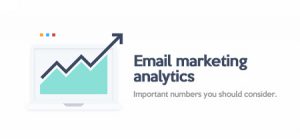Do you frequently open your mobile phone or laptop to check your emails?
If you do, then you are not alone. Because studies show that a whopping 99% of email users check their inbox every day, and as many as 58% of them check it first thing in the morning.
Yet, despite these overwhelming figures, the common belief among marketers is that email marketing caters to an adamant crowd and restrictive email platforms like GMAIL. Add to that, only a slight majority of marketers (55%) think that what they’re sending out is helpful to their target audiences.
In short, many marketers are still unconvinced about the effectiveness of email marketing efforts. But why is that the case for a digital marketing channel with four billion active users a day?
Simple: They’re not looking at the right metrics.
Because absolutely every story in digital marketing starts with a metric - the right ones, for each campaign and effort.
When marketers don’t know what to look for in their campaigns, they won’t know how to track their successes properly. The blind can’t lead the blind; marketers need to know their metrics and data to lead a winning campaign.
But the way forward is fraught with peril, too. If you track the wrong metrics, you’ll end up on a path toward failure. Eventually, this will lead you to believe that this type of marketing isn’t helpful when it’s one of the best ways to reach your audiences and drive conversions.
So these measurement pitfalls beg the question: how do you correctly measure the effectiveness of your email marketing campaign?
Metrics to Measure Email Marketing Effectiveness
For accurate measurement of email marketing effectiveness, you need to look for data that will provide you insights into what marketing campaign goals you’re aiming to achieve.
To tap into that vein, you’ll need to identify the metrics that best align with your goals. The more relevant the metric, the better you are able to measure progress, thereby helping you strategize how you can improve your campaign.
While there are many types of email analytics to track nowadays, there are a couple of standard metrics that you should pay attention to. Let’s talk about them, below.
Inbox Placement Rate (IPR)
Inbox Placement Rate (IPR) is the rate of emails that were sent to the inbox rather than the spam or junk folder.
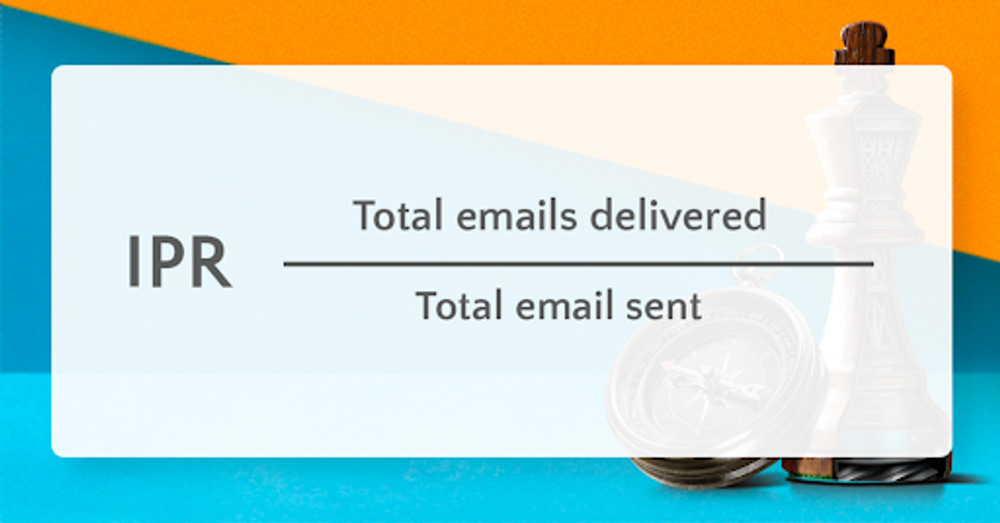
The calculation for IPR. To calculate your IPR, simply divide the number of emails delivered to the inbox by the total number of emails sent. Photo by Propelrr.
There are a number of ways to improve your Inbox Placement Rate. These are as follows.
- Get Permission. Your subscribers should opt-in and not be auto-opted in, and you have to set expectations on frequency, the value you are providing, and give that sense of security that you are not going to spam them. Never use email harvesting software or even buy a mailing list from somewhere you aren’t sure of.
- Follow the Law. There are numerous laws governing email sending, such as the CAN-SPAM Act of 2003 (U.S.), CASL (Canada 2017), GDPR (E.U. 2019), and CCPA (California 2020). Make sure you are compliant with these laws so that your internet service providers (ISPs) won’t take action against you.
- Integrate your email marketing into your bigger marketing plan. If you have a digital marketing agency that handles your digital marketing initiatives, always make sure to bake your email marketing program to be part of the bigger marketing calendar, where you set goals and define your KPIs.
- Make a part of your experimentation program. The critical component of having a successful email marketing campaign is to bake it into your experimentation program—test and track to learn what’s working and what’s making your email list less engaging.
- Use DATA. With the help of your data, you can devise a plan to segment and personalize your email messaging to match it to your intended audience.
Email Bounce Rate
Your bounce rate indicates how many of your emails “bounced” upon sending. This means that some of your emails did not get delivered to your subscriber’s inbox.
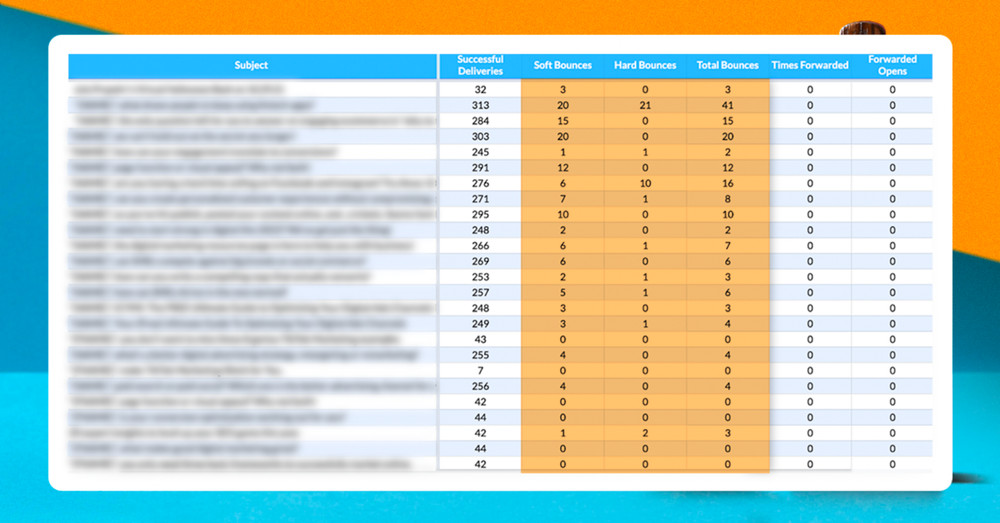
Email Bounces. Can be categorized as Soft or Hard. Together they account for all the times your emails failed to get delivered to the recipient. To get the bounce rate, you divide your total number of bounces by the number of emails you sent. Photo by Propelrr.
This specific measurement is crucial because it gives you an idea of how much of your contact list is invalid, inactive, or unusable. If you have a high bounce rate, you might have to repopulate your contact list with active email addresses for better marketing results.
Open Rate
An open rate is a metric that indicates how many of your prospects opened your marketing message, based on the number of emails you delivered for a campaign.

This metric can give you an idea of how engaging the content of your subject line may be. If the rate is high, your content effectively hooks users. If it’s low, then the content is not attractive enough, or it’s being tagged as spam by inbox providers.
Click-through Rate (CTR)
An email’s CTR, on the other hand, indicates how many people clicked through a link in your email’s message body. This tells you how much of your target audience is clicking on at least one link in your message, out of all the emails you sent in a campaign.
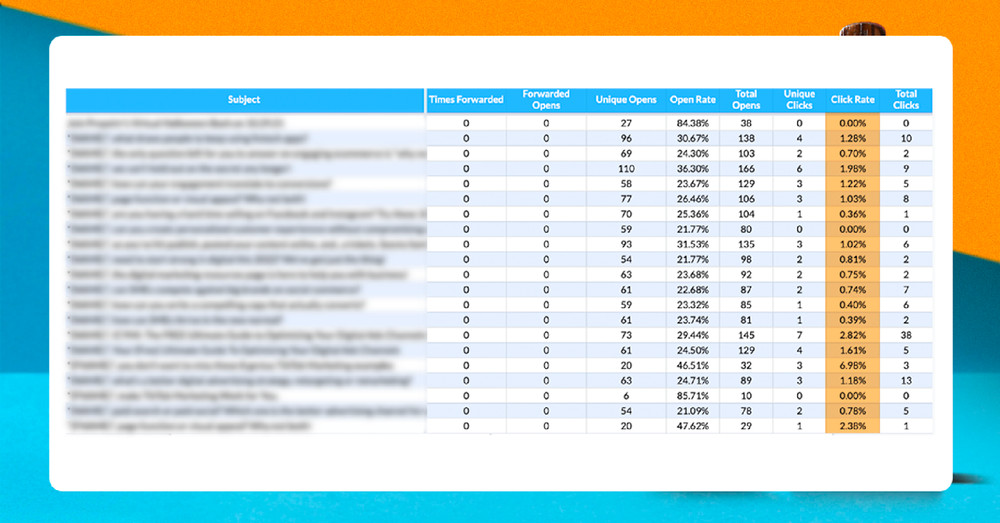
Click-through Rate. Or click rate indicates that your readers are engaging with your content. Use this as a measure of which blogs are successful at pushing your audiences further down the funnel of conversion. Photo by Propelrr.
On average, a CTR should be somewhere between 2% and 5%. But more realistically, your CTR is probably somewhere around 2.3%, since average CTRs vary depending on your industry.
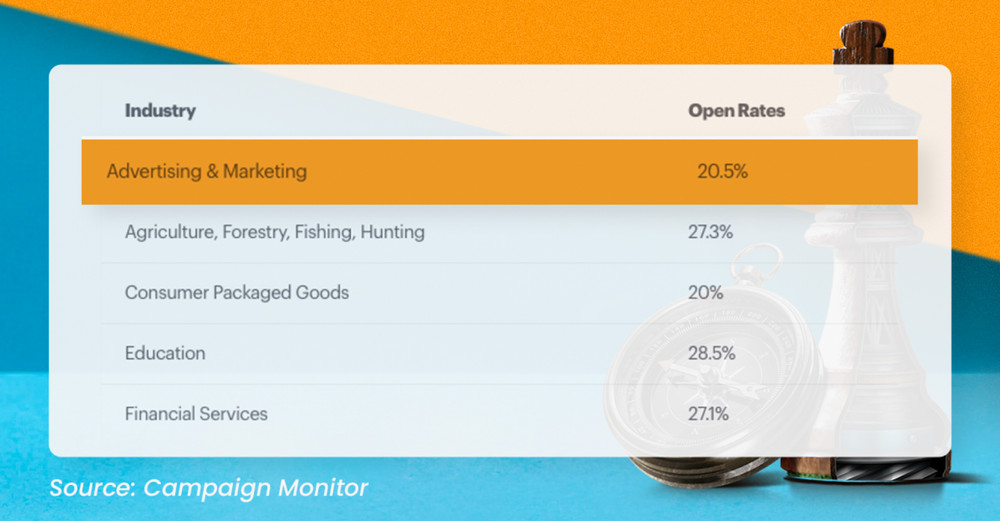
Industry benchmarks for CTR. One thing that marketers forget to do is to contextualize figures. This means a CTR of 15% may appear low to you, but if you cross-check it with benchmarks in your industry, you might find that it’s a reasonable value. Always look at the bigger picture. Photo by Propelrr.
Even with those disparities between CTRs, this metric is still helpful to glean user interest in your content. When readers engage with your email, they unconsciously tell you what they liked best from your content, just with that extra little click.
With this metric, you’ll better understand the type of content your target audiences prefer to click on. This can help you strategize campaigns better for even more conversions and sales in the future.
Landing Pages’ Bounce Rate
Aside from the email bounce rate, look at the corresponding landing pages your emails are pointing to and measure how their bounce rates. This will give you insights into how your emails are aligned with your landing pages’ content.
Email Conversion Rate
The next metric on this list is the email conversion rate, showing you the percentage of users that completed a conversion through your digital campaign.
Examples of the desired conversion can include:
- Making a purchase.
- Signing up for a newsletter.
- Visiting a website linked through your message body.
The conversion rate is an essential gauge for your campaign’s overall effectiveness. It tells you how successful you were in leading potential customers towards the desired conversion for your brand.
While conversion rates vary wildly per industry, a baseline conversion rate is somewhere around 2.35% – the pretty average across all sectors.
On the other hand, a great conversion rate is somewhere between 10% and 20%. If your conversion rate is that high, then you’re likely converting around three to five times more than your competitors, regardless of your business’ industry.
Unsubscribe Rate
Next is your unsubscribe rate. This measurement tells you how many of your current subscribers are unsubscribing or opting out of receiving your emails.
What can this tell you about your subscribers and content? Perhaps your marketing content isn’t resonating with these subscribers, or your contact list isn’t populated with the right target audiences.
Whatever the reason may be, this metric lets you know that it’s time to strategize a little differently with your next campaign.
List Growth Rate
The list growth rate is a metric directly related to your marketing contact list. This measurement tells you how much your contact list is growing over a certain period instead of “churning” or reducing in size.
The list growth rate matters because it lets you know how many people are becoming more interested and engaged with your content. Naturally, you’ll want to have a populated list with active contacts. Even if you have a few churners, you can say that your email list growth rate is positive if it’s increasing with more active contacts.
DeBounce’s email validation tool is a fast and easy way to check your contact list and make sure it’s populated with active emails. By eliminating inactive addresses with this tool, you get a clean and active contact list that you can use in your marketing campaign.
Email Sharing/Forwarding Rate
This metric is pretty self-explanatory - the email sharing/forwarding rate tells you how many people shared or forwarded your marketing content to other potential customers and users.
This specific marketing metric stands alongside the conversion rate as one of the more important gauges for your campaign’s effectiveness. If you have a positive email sharing/forwarding rate, you’re likely to generate more new leads over a specific time because your email itself turns into the marketing content.
By tracking this metric, you can identify the exact marketing content that your current users find very useful and share-worthy. Consider these insights the next time you build your content for a successful digital campaign.
Overall ROI
The last metric on this list is your overall ROI or return on investment. This key metric indicates how much you earned back from your investment in an email marketing campaign.
Simply put, the ROI refers to the revenue generated from a campaign divided by the amount invested into a campaign:
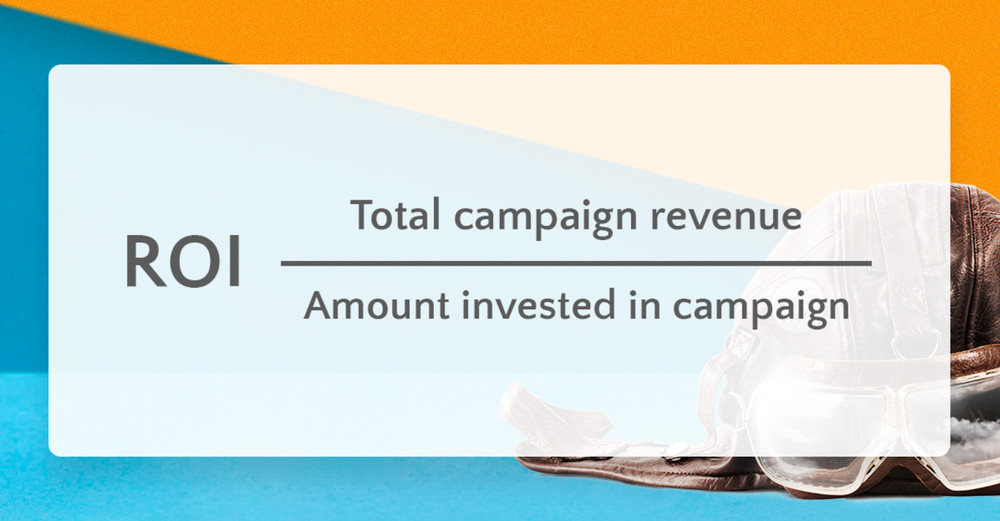
Computing ROI. Is really as straightforward as that. Don’t fall into the trap of needing to over-complicate things or else you won’t get anything done. Photo by Propelrr.
So if you gained $100,000 from a campaign that cost $1,000, you could say that you have a 100% ROI - which sounds pretty impressive at first glance.
Realistically, however, there are other ways that you can approach a campaign’s ROI depending on what you invested and how you succeeded.
Think of your ROI in terms of lead generation, for example. How many active leads did you generate through a campaign, and how do they translate into potential revenue?
ROI gives you an idea of how effective a marketing execution can be, with substantial and measurable results.
Tracking Tools for Email Marketing
Tracking your metrics can be challenging when you’re on your own. The good news? The best email marketing tools to monitor your campaign are just a few clicks away. Check out these robust software selections for you to use in 2022.
HubSpot
HubSpot is one of the industry’s leading tools for tracking any digital marketing campaign. Not only does it help you identify the metrics to track for your campaigns, but it also has powerful analytics tools that can provide real-time reporting of your digital campaign’s overall performance.
HubSpot is one of the biggest and best in the business, with features that support detailed analytics and many more. This digital tool usually costs around $50, specifically its email marketing services.
MailChimp
If you’ve heard of HubSpot, you’ve probably heard of MailChimp. This other industry leader is an excellent tool for measuring email marketing success for large businesses and organizations.
MailChimp is best known for its intuitive digital campaign creator, which lets users write, organize, and deliver multiple emails. Best for large organizations, MailChimp offers several pricing brackets.
Sendinblue
If MailChimp is excellent for large businesses, Sendinblue is fantastic for smaller organizations and enterprises. While it offers similar services to its competitors, Sendinblue provides a free plan for growing businesses that help them get started with their email marketing campaign goals.
Sendinblue has automation features that help you schedule, send, and follow up 300 free emails for an unlimited number of contacts per day. This tool also enables you to develop landing pages, survey forms, and digital ads for your target audience.
Google Analytics
Additionally, Google Analytics is a free analytics tool that you can use alongside other email marketing software to give you website traffic from your email campaign, landing pages bounce rates, email conversion rate, and more.
Use UTM tags for your email tracking and accurate event-driven goals on Google Analytics instead of the page destination approach in preparation for the upcoming Google Analytics 4 (GA4) version.
Tips for Improving Your Email Marketing Campaigns
Now that you have the right tools and metrics for your brand, it’s time to look at some final email marketing tips to secure success for your campaign.
- Sentiment overvalue. Want to attract new users to your brand? Then it would be best if you struck a chord with them first. Please get to know your segments and customize content to their sentiments to make your value resonate with these users better than other brands.
- Catch — and keep — your readers’ attention. Email marketers have the difficult task of catching — and keeping — a reader’s attention in just a few lines. Hook readers in with an exciting headline, and keep them interested with attractive visuals that lead to your call to action.
- Add "alt text" info to your images. What are attractive visuals if your users can't even see them? Remember to add alt text information to images in your emails; this helps visually impaired users access your content and improves people's engagement using screen readers.
- Keep your list fresh. Your content creation efforts can only go so far if your contact list isn’t up to date. Keep your contact list fresh by removing inactive addresses and growing your list with newer, more active email contacts.
- Send an email at the best time. Timing is everything, in life and in email marketing. Remember to study your target audience to know the best times for sending them content. This simple tip can drive conversions by bringing your content to users at the perfect time and place.
These elements for successful communication are pillars for the rest of your email marketing manifesto. Get excited about more tools and services as you build out your campaign for business success.



